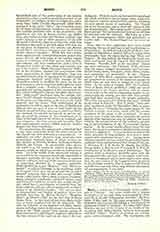

Musti, a titular see of Proconsular Africa, suffra-gan of Carthage. This town, which was a Roman municipium at an early date, is mentioned by Ptolemy, IV, 3, 33, the “Itinerarium Antonini”, the Peutinger Table, and the Ravenna geographer, Vibius Sequester, who narrates the killing at this place of an enormous serpent by Regulus. Its ruins, called Mest Henshir, are seen in the vicinity of the koubba of the marabout Sidi Abd-er-Rehou, between Teboursouk and Keff (Tunis). Worthy of mention are two fine gates, and a triumphal arch. The inscriptions call the inhabitants Musticenses or Mustitani; the latter name is also used by St. Augustine. In 411, at the time of the Carthage conference, Musti had besides two Donatist bishops (Felicianus and Cresconius) two Catholic bishops (Victorianus and Leontius). Autonianus was one of the bishops exiled by Huneric in 482. Musti was then included in Proconsular Numidia. In 646 Bishop Januarius signed the letter of the bishops of Proconsular Africa to Paul, Patriarch of Constantinople, against the Monothelites.
S. PETRIDES

